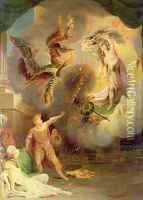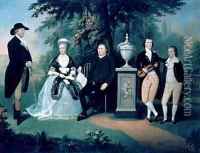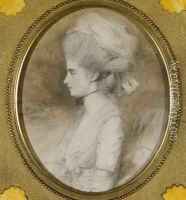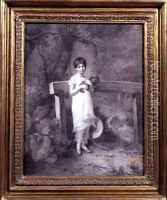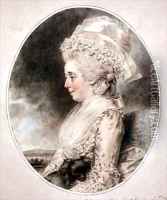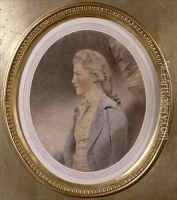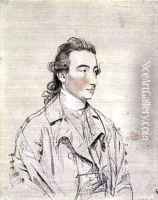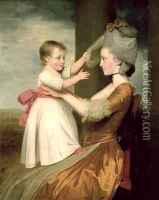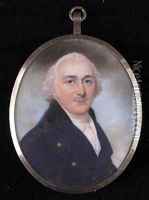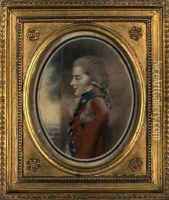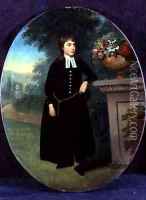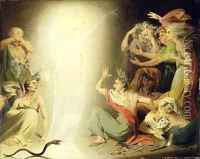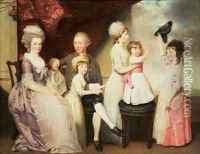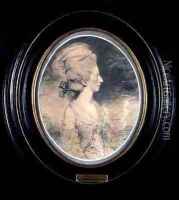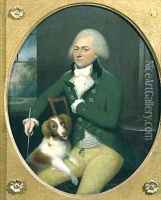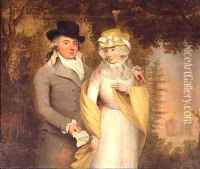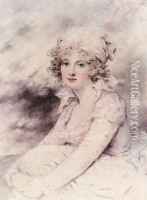John Downman Paintings
John Downman was a distinguished British portrait painter, known for his delicate and refined approach to drawing and painting. Born in Ruabon, Denbighshire, Wales, in 1750, he developed an early interest in art, which led him to pursue his passion professionally. Downman began his formal art education at the Royal Academy Schools in London in 1769, where he studied under the guidance of prominent artists of the time.
Throughout the 1770s and 1780s, Downman established himself as a gifted portraitist, gaining recognition for his unique style that emphasized the grace and elegance of his subjects. His works were primarily in the form of drawings and watercolors, which were highly appreciated for their detail, color, and lifelike quality. Downman's ability to capture the character and personality of his sitters made him a favorite among the British aristocracy, and he received numerous commissions from influential figures of his time.
In addition to portraits, Downman also produced a number of historical and mythological paintings, showcasing his versatility as an artist. Despite this, it was his portraits that remained most in demand and are best remembered today. His works were exhibited at the Royal Academy and other prominent venues, further solidifying his reputation.
Downman's career faced challenges towards the end of the 18th century, as tastes in art shifted and the demand for his style of portraiture declined. However, he continued to work and exhibit his art, adapting to changing preferences while maintaining his distinctive approach.
John Downman passed away in 1824 in Wrexham, leaving behind a legacy of work that continues to be admired for its elegance and sensitivity. His contributions to British portraiture are celebrated, and his works are held in the collections of major museums and galleries, including the British Museum and the National Portrait Gallery in London.
